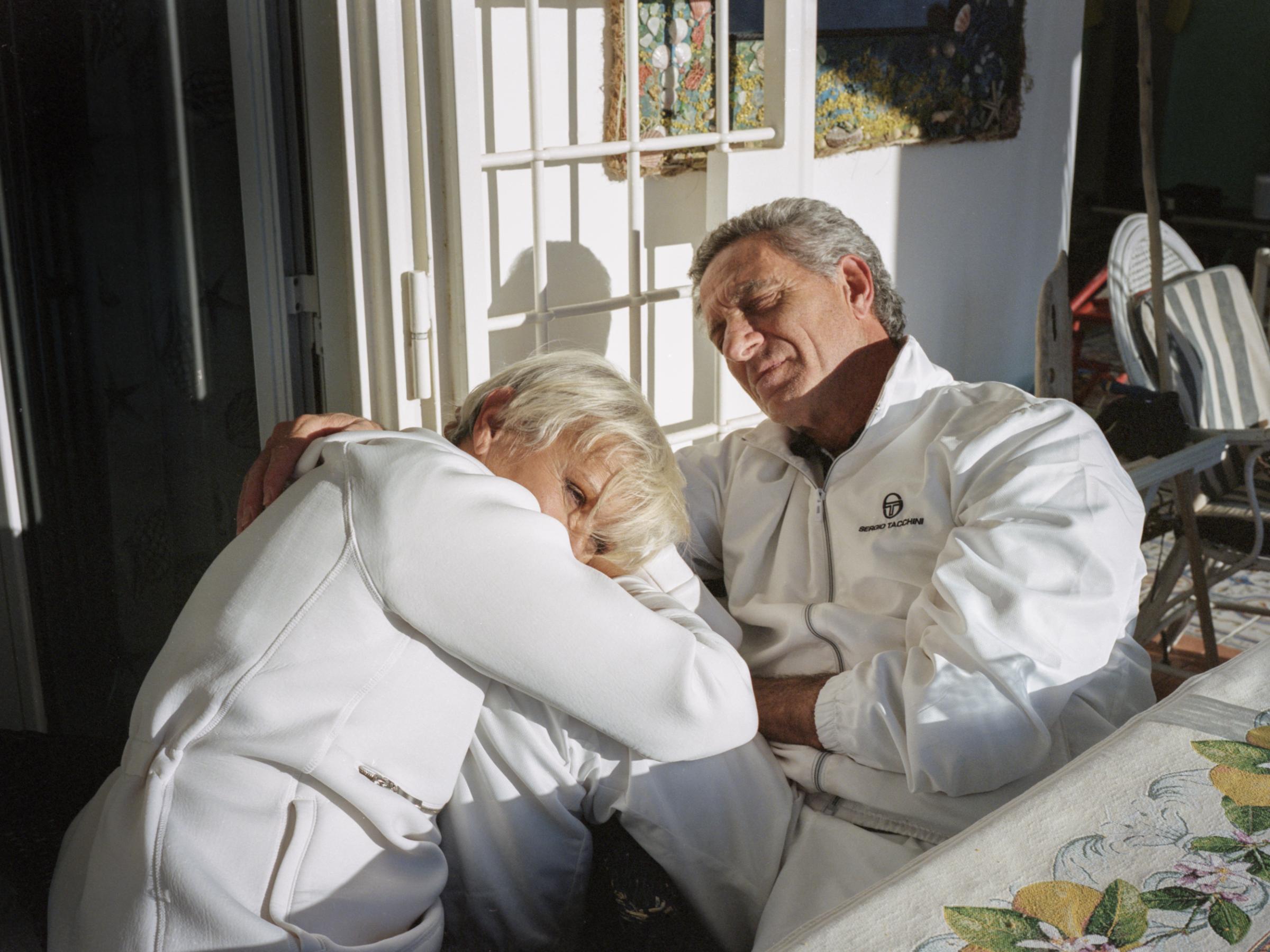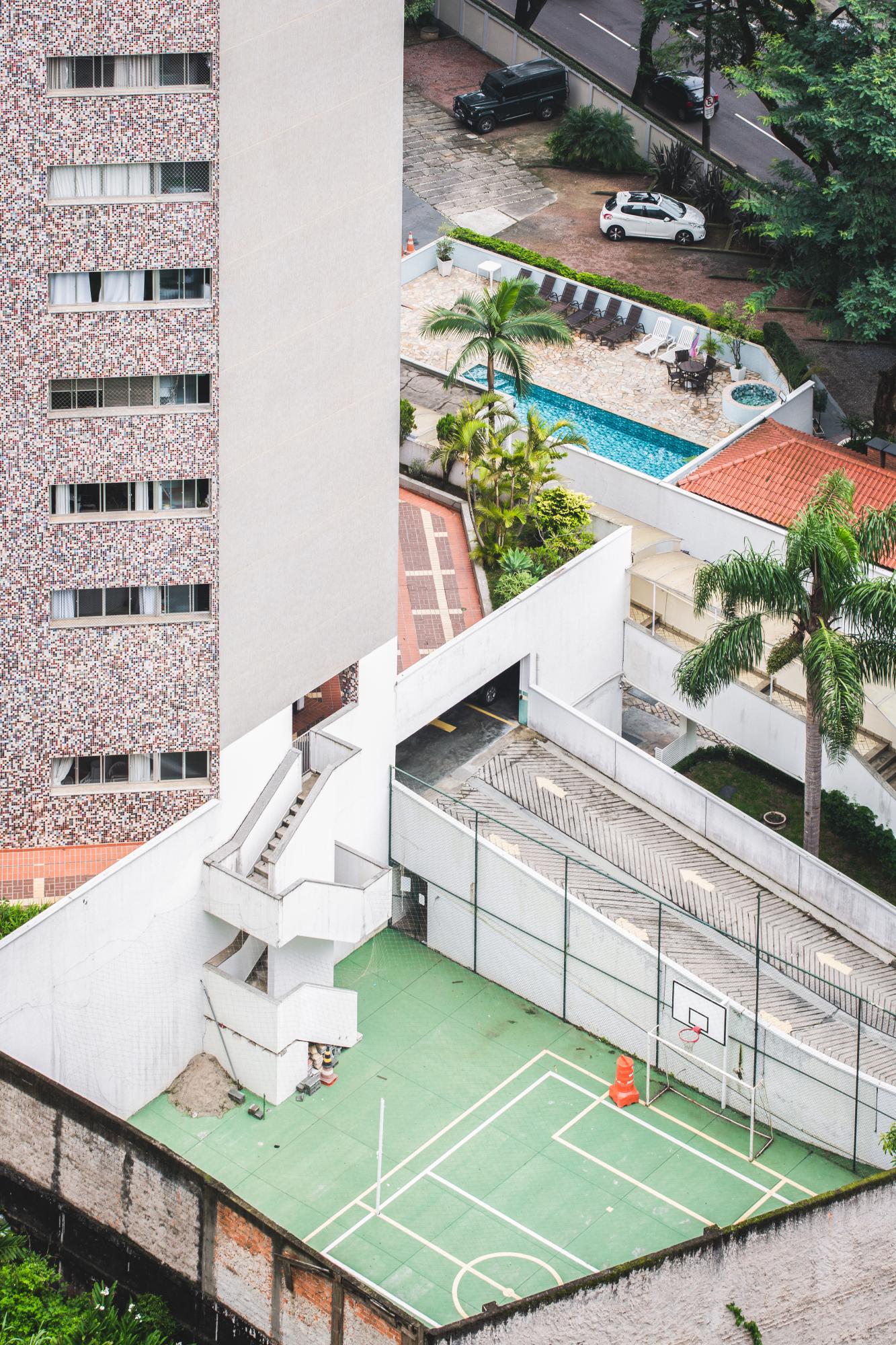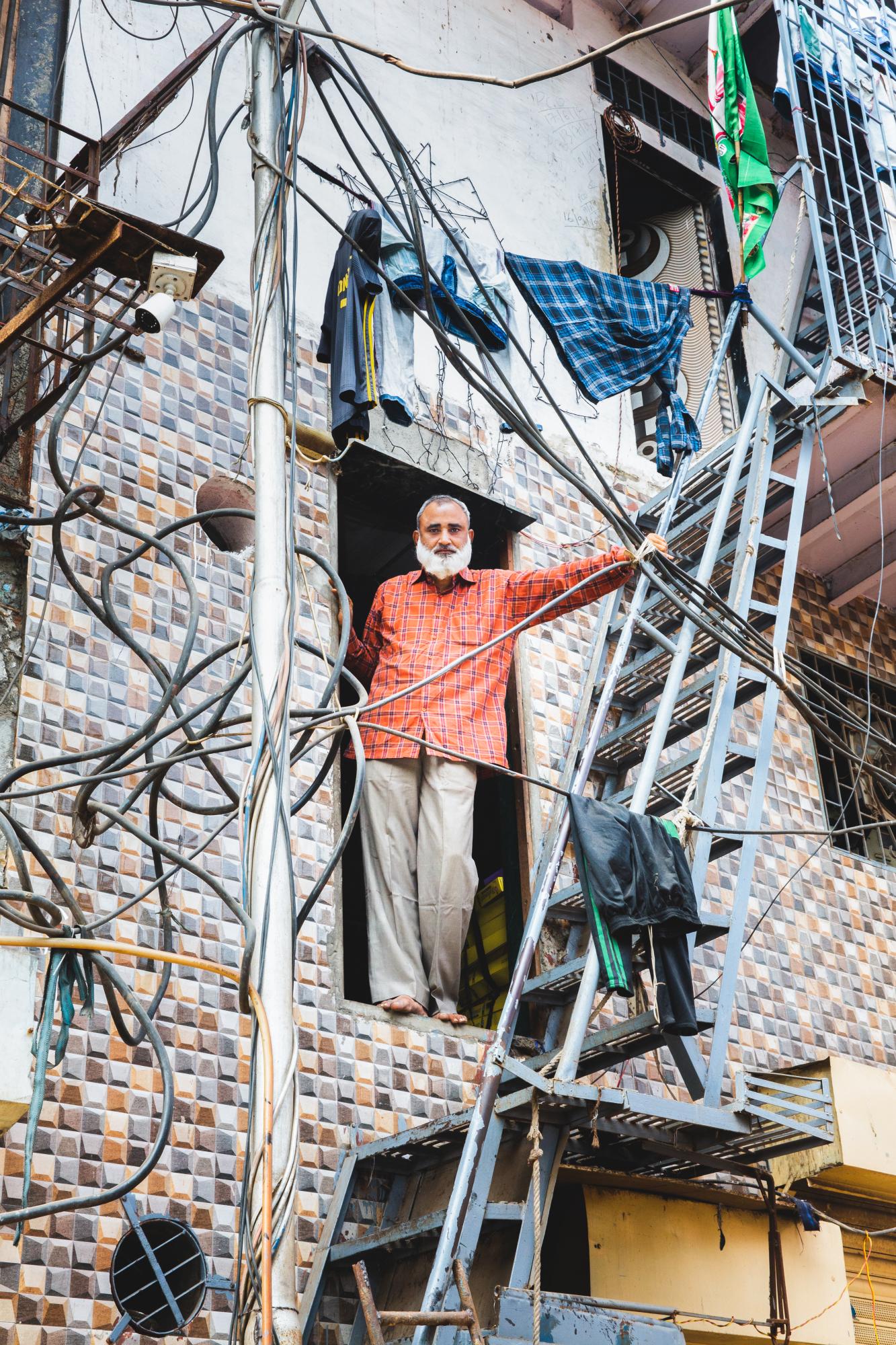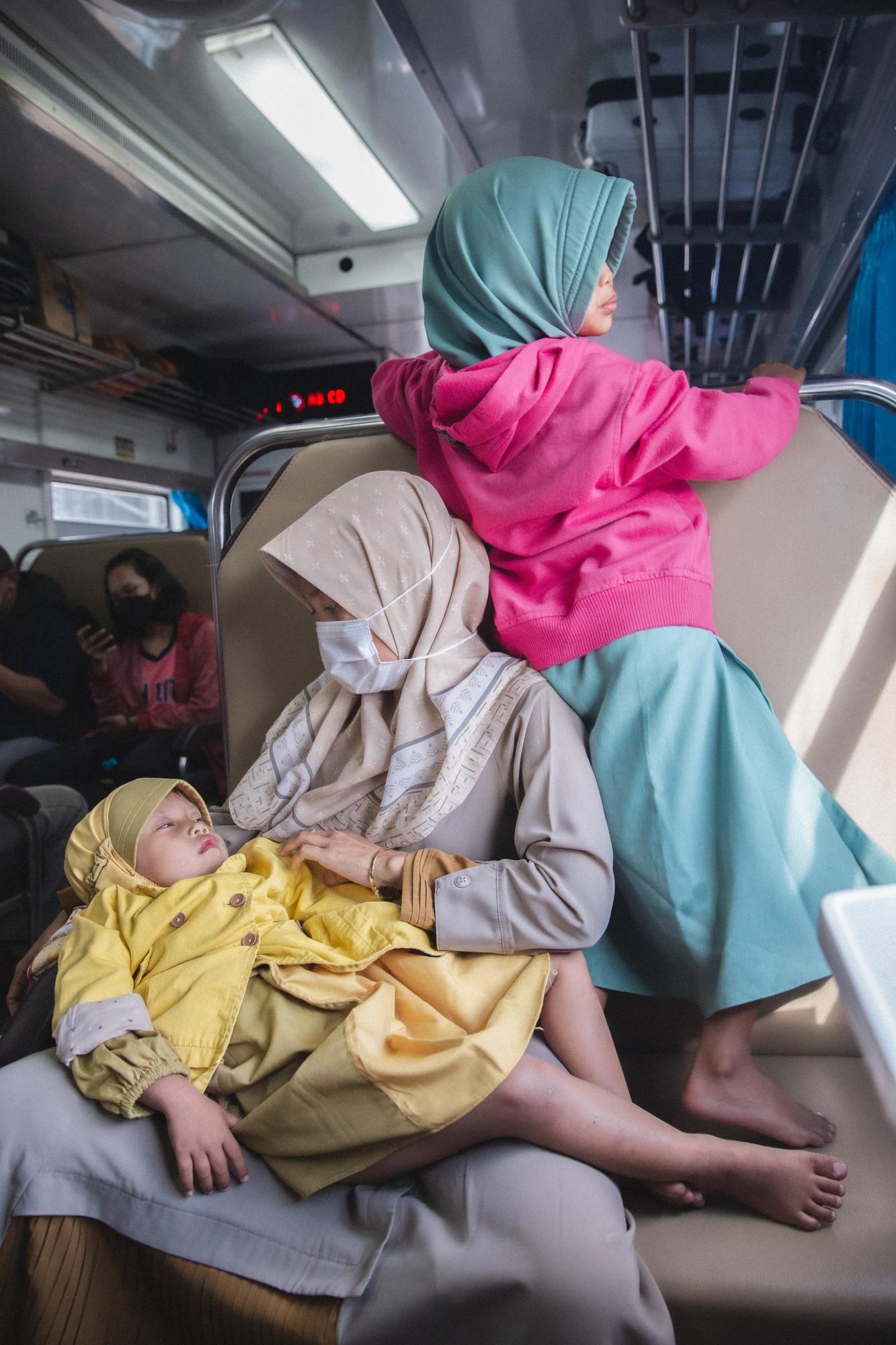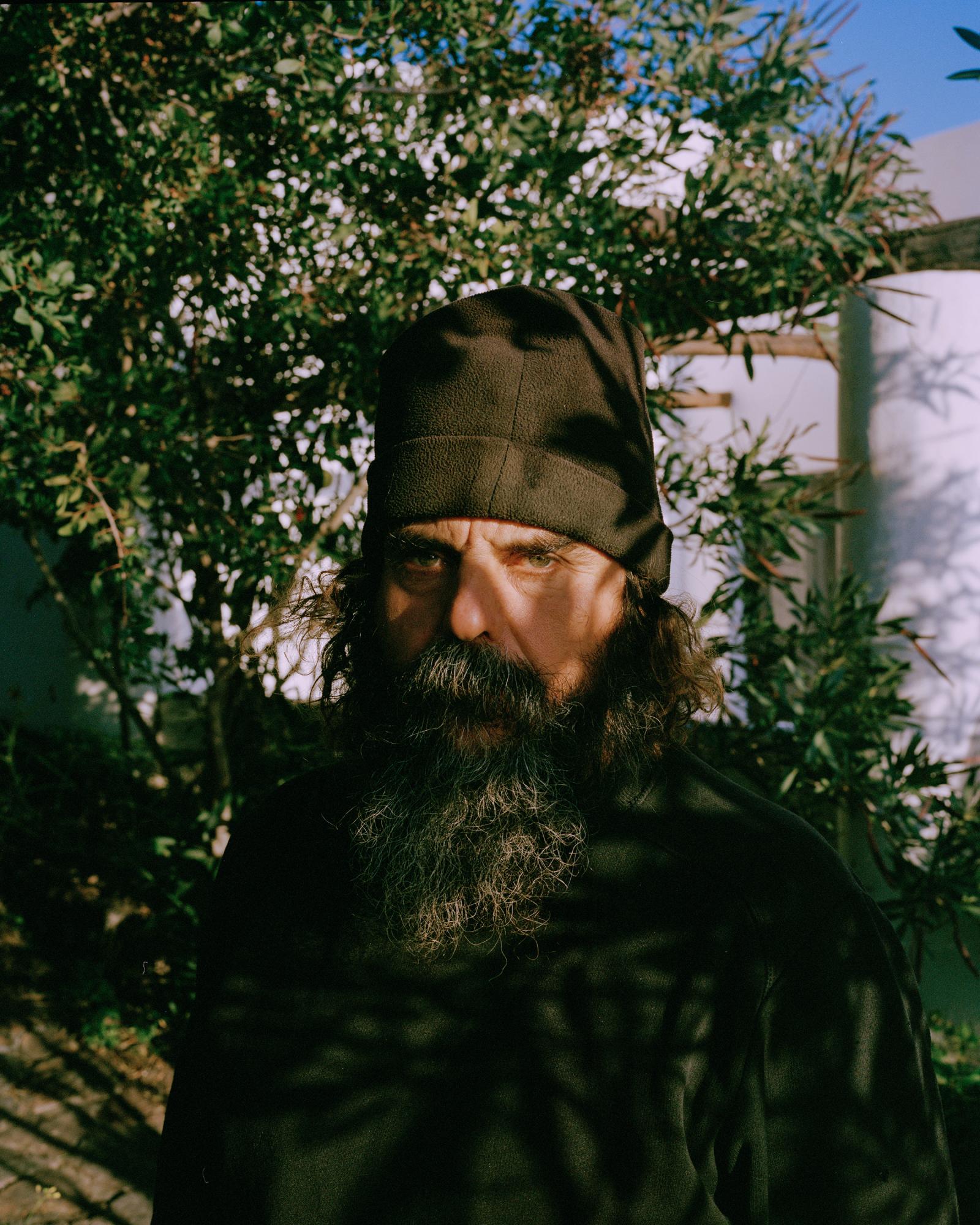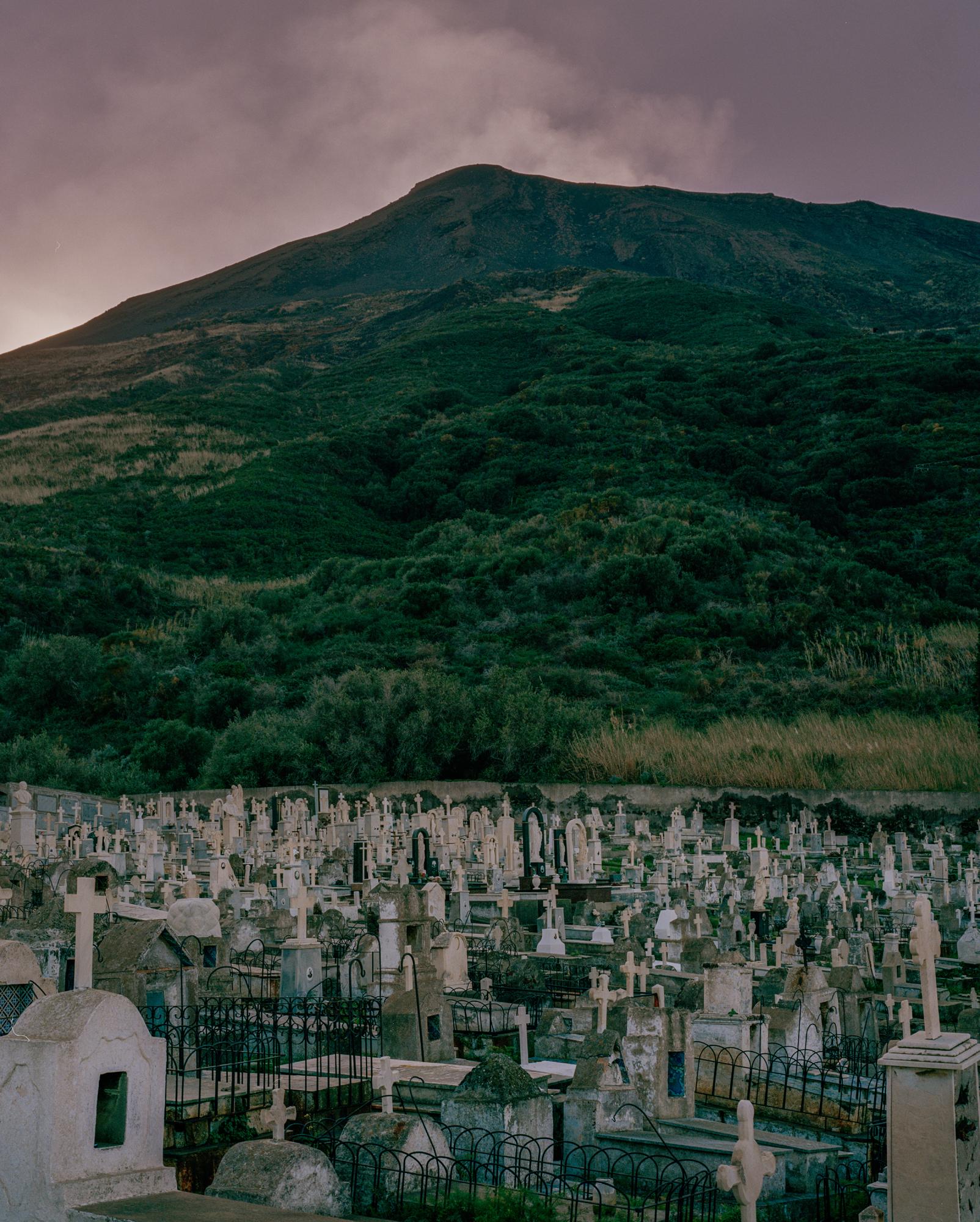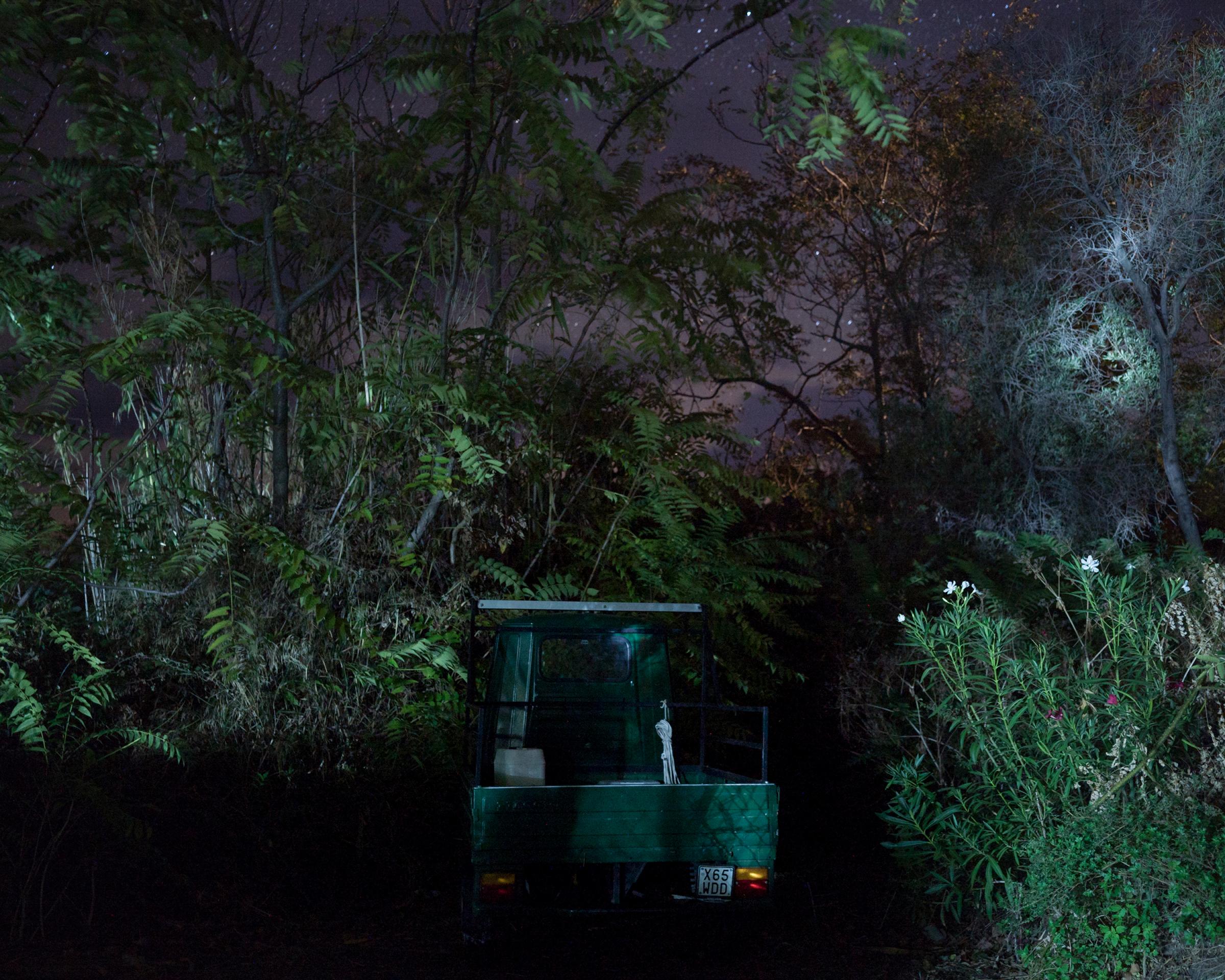Visura interviews photographer Gaia Squarci
Gaia Squarci is a photographer and videographer focusing on the relationship between humans and the environment, and on the complexities of family life.
Through her documentary work, Squarci stretches and challenges the documentary form by exploring the intimate, mysterious, and deeply personal moments of a story. She is currently based between Milan and New York.
Her most recent exhibition, The Cooling Solution, is a research and photographic collaboration that weaves together research, data, and visuals to explore the everyday experiences of escalating heat in India, Indonesia, Brazil, and Italy due to climate change. By examining various socioeconomic backgrounds, the exhibition and book investigate the diverse strategies individuals employ to adapt to a changing climate.
Gaia is an IWMF fellow and National Geographic Society grantee. She has exhibited her work internationally in festivals and exhibitions across the United States, Italy, France, Switzerland, Greece, Mexico, China, and Taiwan. Her work has been featured in The New York Times, The New Yorker, Time Magazine, Vogue, The Washington Post, The Guardian, The Economist, Internazionale, and Marie Claire Italia.
This interview has been edited for clarity and length.
Through her documentary work, Squarci stretches and challenges the documentary form by exploring the intimate, mysterious, and deeply personal moments of a story. She is currently based between Milan and New York.
Her most recent exhibition, The Cooling Solution, is a research and photographic collaboration that weaves together research, data, and visuals to explore the everyday experiences of escalating heat in India, Indonesia, Brazil, and Italy due to climate change. By examining various socioeconomic backgrounds, the exhibition and book investigate the diverse strategies individuals employ to adapt to a changing climate.
Gaia is an IWMF fellow and National Geographic Society grantee. She has exhibited her work internationally in festivals and exhibitions across the United States, Italy, France, Switzerland, Greece, Mexico, China, and Taiwan. Her work has been featured in The New York Times, The New Yorker, Time Magazine, Vogue, The Washington Post, The Guardian, The Economist, Internazionale, and Marie Claire Italia.
This interview has been edited for clarity and length.
In an interview with Blind Magazine, you shared that documentary photography changed you. What propelled that change and how did it change you?
Gaia Squarci: I used to be a very shy kid, looking for a way to get out of my shell. Photography connected my interest in visual arts with an excuse to approach people, asking them to lead me into situations I would have not otherwise encountered. It became the missing ring of the chain, and it gave me an excuse to enter new spaces.
In my experience, documentary photography really shapes your personality. Flexibility is a must. You often become kind of homeless. I have been hosted on endless sofas of friends of friends, in countries where I hadn’t been before. There’s competition among photographers, but also a lot of solidarity. We actively help each other all the time, in a field that would be otherwise impossible to navigate.
When you are looking for contacts and doing research on a topic, this forces you to pick up the phone, call up strangers, and try to make things work. You learn to be assertive, because if you don’t stand up for yourself no one in the industry will have your best interest at heart. All of that goes against my nature. I definitely would be a very different person if I had chosen another job.
What three resources have most helped you develop and further your visual language?
Gaia Squarci: The first resource has been ICP (International Center of Photography). It really bombarded me with input at a time when I didn't know much about photography as a form of art and information, nor about how to practically work in the industry.
Friends and colleagues have also been an incredible resource. There’s so much growth when we brainstorm, give each other advice, or collaborate on projects. I love to look back at the initial idea and see how much the project changed since.
Then, festivals, exhibitions, and cinema. In the photography field, Les Rencontres d’Arles and Cortona on the Move festivals have been a source of inspiration not only because of the work that’s shown but also because of the way it is presented. And any research that goes beyond the field of photography into painting, sculpture, sound, cinema and performance is also crucial, to avoid referencing what’s already been done in our small professional world.
Gaia Squarci: I used to be a very shy kid, looking for a way to get out of my shell. Photography connected my interest in visual arts with an excuse to approach people, asking them to lead me into situations I would have not otherwise encountered. It became the missing ring of the chain, and it gave me an excuse to enter new spaces.
In my experience, documentary photography really shapes your personality. Flexibility is a must. You often become kind of homeless. I have been hosted on endless sofas of friends of friends, in countries where I hadn’t been before. There’s competition among photographers, but also a lot of solidarity. We actively help each other all the time, in a field that would be otherwise impossible to navigate.
When you are looking for contacts and doing research on a topic, this forces you to pick up the phone, call up strangers, and try to make things work. You learn to be assertive, because if you don’t stand up for yourself no one in the industry will have your best interest at heart. All of that goes against my nature. I definitely would be a very different person if I had chosen another job.
What three resources have most helped you develop and further your visual language?
Gaia Squarci: The first resource has been ICP (International Center of Photography). It really bombarded me with input at a time when I didn't know much about photography as a form of art and information, nor about how to practically work in the industry.
Friends and colleagues have also been an incredible resource. There’s so much growth when we brainstorm, give each other advice, or collaborate on projects. I love to look back at the initial idea and see how much the project changed since.
Then, festivals, exhibitions, and cinema. In the photography field, Les Rencontres d’Arles and Cortona on the Move festivals have been a source of inspiration not only because of the work that’s shown but also because of the way it is presented. And any research that goes beyond the field of photography into painting, sculpture, sound, cinema and performance is also crucial, to avoid referencing what’s already been done in our small professional world.
Tell me about your new exhibition, The Cooling Solution. How would you describe it in your own words?
Gaia Squarci: The Cooling Solution was born out of a five-year-long scientific research project, focused on how people in different countries are coping with rising temperatures and humidity, within the context of climate change.
According to the International Environmental Agency, 10 new AC units will be sold every second for the next 30 years, bringing the number of installed units worldwide to 5.6 billion by 2050. At a global level, between now and 2100, space cooling could account for up to 7% of the global total cumulative greenhouse gas emissions, about 350 billion tons of CO2. This is about ten times the current global annual CO2 emissions from fossil fuels.
The research, led by the University of Venice, in Italy, focused on tropical, populous areas whose economy is growing, and chose countries with good demographic data available, namely India, Indonesia, and Brazil. As their middle classes grow, more and more people will be able to afford cooling technology. Italy, the fourth country we worked on, was chosen as a European counterpart, and a market that presents behavioral differences from the point of view of AC adoption.
The message of the project is not that we should never use AC. Cooling technologies can save lives during heat waves or uncomfortable climatic conditions, especially for the most fragile subjects like children, the elderly, people with disabilities, and pregnant women. But while keeping us cool inside our apartments, AC contributes to GHG emissions and directly increases the heat outdoors, creating a “heat island” effect in urban environments. The more AC we use, the more we’ll need it. It’s a vicious cycle.
I traveled with Jacopo Crimi, the project’s communication officer, to investigate alternative cooling strategies coming from vernacular architecture as well as emerging technologies. We tried to emphasize the fact that our life choices and behaviors have an impact on people from different socio-economic layers in our own country, on people in other countries, and on our own future.
Gaia Squarci: The Cooling Solution was born out of a five-year-long scientific research project, focused on how people in different countries are coping with rising temperatures and humidity, within the context of climate change.
According to the International Environmental Agency, 10 new AC units will be sold every second for the next 30 years, bringing the number of installed units worldwide to 5.6 billion by 2050. At a global level, between now and 2100, space cooling could account for up to 7% of the global total cumulative greenhouse gas emissions, about 350 billion tons of CO2. This is about ten times the current global annual CO2 emissions from fossil fuels.
The research, led by the University of Venice, in Italy, focused on tropical, populous areas whose economy is growing, and chose countries with good demographic data available, namely India, Indonesia, and Brazil. As their middle classes grow, more and more people will be able to afford cooling technology. Italy, the fourth country we worked on, was chosen as a European counterpart, and a market that presents behavioral differences from the point of view of AC adoption.
The message of the project is not that we should never use AC. Cooling technologies can save lives during heat waves or uncomfortable climatic conditions, especially for the most fragile subjects like children, the elderly, people with disabilities, and pregnant women. But while keeping us cool inside our apartments, AC contributes to GHG emissions and directly increases the heat outdoors, creating a “heat island” effect in urban environments. The more AC we use, the more we’ll need it. It’s a vicious cycle.
I traveled with Jacopo Crimi, the project’s communication officer, to investigate alternative cooling strategies coming from vernacular architecture as well as emerging technologies. We tried to emphasize the fact that our life choices and behaviors have an impact on people from different socio-economic layers in our own country, on people in other countries, and on our own future.
What were the reasons for incorporating documentary photography into the project?
Gaia Squarci: When academic researchers are assigned grants to work on certain topics, usually no percentage of the money is used to bring this knowledge outside of academia. In our case, things grew step by step. Initially the head of the research project, prof. Enrica De Cian, who had obtained a grant from the European Research Council, just needed stock photos of AC in India.
Jacopo proposed to commission a set of images instead of downloading them from wire agencies, and to add a couple of alternatives to AC in the research. That’s how he and I initially traveled to India, on a very low budget. When prof. De Cian saw the photographs after our first trip, she realized that photography could bring the data “alive”, by connecting them to people's human experiences around the world. She saw how even researchers who had been working for a long time on this project could better understand the implications of the situations that their research was representing.
At that point, she decided to really invest in a dedicated part of scientific dissemination for the broader public, and photography was the trigger of it. Looking back, it’s crazy to think that this project, which then became also a book and exhibition, was born out of the need for stock images to “illustrate” a couple of articles. It shows how separate each professional world still is, and how much we can do if we keep our minds open, and have a bit of vision.
Gaia Squarci: When academic researchers are assigned grants to work on certain topics, usually no percentage of the money is used to bring this knowledge outside of academia. In our case, things grew step by step. Initially the head of the research project, prof. Enrica De Cian, who had obtained a grant from the European Research Council, just needed stock photos of AC in India.
Jacopo proposed to commission a set of images instead of downloading them from wire agencies, and to add a couple of alternatives to AC in the research. That’s how he and I initially traveled to India, on a very low budget. When prof. De Cian saw the photographs after our first trip, she realized that photography could bring the data “alive”, by connecting them to people's human experiences around the world. She saw how even researchers who had been working for a long time on this project could better understand the implications of the situations that their research was representing.
At that point, she decided to really invest in a dedicated part of scientific dissemination for the broader public, and photography was the trigger of it. Looking back, it’s crazy to think that this project, which then became also a book and exhibition, was born out of the need for stock images to “illustrate” a couple of articles. It shows how separate each professional world still is, and how much we can do if we keep our minds open, and have a bit of vision.
92% Humidity, 19°C. The courtyard of a residential building in a central neighborhood of Curitiba, the capital of Paraná, one of the richest states of the country. Brazil, 2022. From the project “The Cooling Solution”. © Gaia Squarci
63% Humidity, 30°C. A man gazes across tangled cables diverting electricity from the main grid, in the slum of Dharavi, Mumbai, India. From the project “The Cooling Solution”. © Gaia Squarci
In your role as a documentary photographer, what were your main responsibilities? What did you want to accomplish with your work?
Gaia Squarci: It was hard to work on this. What was required of me was often much more linear and didactic than I usually like to be in my photography. I refused to just illustrate or explain visually the results of the research, and tried, where I could, to work with visual clues that could help people connect to their own life experiences related to excessive heat and cooling strategies.
I also didn’t want to perpetuate visual stereotypes related to people who live in poverty in developing countries, but they were important to include, because they’re the ones who are most disadvantaged, and at risk, in the context of climate change. I tried to photograph in the same way in Italy and abroad, in a poor neighborhood or in a green building, showing life conditions in a way that could stir empathy, as opposed to sympathy. At least, that was the intention.
My main responsibility was being the photographer, within a project where no one was used to working with photography. It was an entirely new thing for the research team, so there was a lot of responsibility on my shoulders. Things took a turning point when I was allowed to choose a team of curators to work on the output of the project.
I decided to work with Kublaiklan, a team that works on many photo festivals and exhibitions in Italy. They took care of curatorship, exhibition concept, and graphic identity. We had many discussions to decide how to give shape to the work as a whole and in detail. They had a fresh eye on the images and they brought their expertise to the project, which required a set of skills that went well beyond what I, or Jacopo, could have done by ourselves.
In your opinion, how can visual storytellers expand or reimagine the narratives of the climate crisis?
Gaia Squarci: I think a lot has already changed since when a broad communication on climate change started. It used to be just focused on the extremes, showing melting icebergs in the Arctic and drought in African countries. Those examples failed because they were too far from the reality of most people who could see them in the media and potentially make choices to change their life habits, or take action in a decisive way.
In this project, we have chosen to focus not on emergencies, but on regular moments of daily life. Those quiet scenes take place during the constant emergency we now live in, even if we tend to forget it. We combined scientific data and personal stories of people while they work and rest, to help the public identify with them even if they live in different geographical areas. Information ideally should create a domino effect triggered by a change of mindset in the individuals.
Gaia Squarci: It was hard to work on this. What was required of me was often much more linear and didactic than I usually like to be in my photography. I refused to just illustrate or explain visually the results of the research, and tried, where I could, to work with visual clues that could help people connect to their own life experiences related to excessive heat and cooling strategies.
I also didn’t want to perpetuate visual stereotypes related to people who live in poverty in developing countries, but they were important to include, because they’re the ones who are most disadvantaged, and at risk, in the context of climate change. I tried to photograph in the same way in Italy and abroad, in a poor neighborhood or in a green building, showing life conditions in a way that could stir empathy, as opposed to sympathy. At least, that was the intention.
My main responsibility was being the photographer, within a project where no one was used to working with photography. It was an entirely new thing for the research team, so there was a lot of responsibility on my shoulders. Things took a turning point when I was allowed to choose a team of curators to work on the output of the project.
I decided to work with Kublaiklan, a team that works on many photo festivals and exhibitions in Italy. They took care of curatorship, exhibition concept, and graphic identity. We had many discussions to decide how to give shape to the work as a whole and in detail. They had a fresh eye on the images and they brought their expertise to the project, which required a set of skills that went well beyond what I, or Jacopo, could have done by ourselves.
In your opinion, how can visual storytellers expand or reimagine the narratives of the climate crisis?
Gaia Squarci: I think a lot has already changed since when a broad communication on climate change started. It used to be just focused on the extremes, showing melting icebergs in the Arctic and drought in African countries. Those examples failed because they were too far from the reality of most people who could see them in the media and potentially make choices to change their life habits, or take action in a decisive way.
In this project, we have chosen to focus not on emergencies, but on regular moments of daily life. Those quiet scenes take place during the constant emergency we now live in, even if we tend to forget it. We combined scientific data and personal stories of people while they work and rest, to help the public identify with them even if they live in different geographical areas. Information ideally should create a domino effect triggered by a change of mindset in the individuals.
What can documentary photography offer society today?
Gaia Squarci: I think photographs still hold a strong emotional impact. A common mistake we often make is underestimating the audience, taking for granted that people want to be fed just photos of cats and pies, and they cannot respond in an impactful way to something deeper.
The editorial industry is facing a deep crisis, and I think it’s not only due to technology. In recent years I’ve seen a polarization between editorial choices that preserved the status quo, pretending that the world of photography and information hasn’t changed, and others that privileged new approaches just for the sake of them being new, without really considering what they were bringing to the conversation.
Those decisions might have been caused by the fear of making the wrong move and the need to keep one’s place in a fast-changing industry, but they’ve certainly frustrated part of the audience and pushed many photographers away from even trying to work in the editorial world, turning them to commercial and more profitable opportunities. On the plus side, photography today is truly available to most and it never exists in a vacuum, but constantly in conversation with other media, whether they are text, video, sound, or data. What’s crucial is the shape that conversation takes.
A blind side in the debate about AI for instance, which I find to be potentially very dangerous as a vehicle of disinformation and perpetuation of biases, is the experience that lies behind the gesture of taking a photograph. In most cases, the understanding or whatever or whoever is in front of the lens, the development of a relationship with a person or place, is not a byproduct of the need of being present, it is the very point of photography, and certainly the reason why I and many others chose it as a form of communication. If photography carries along a series of historical wrongs, and it created those very biases that now AI picks up on, it is also true that in its most primitive, honest form, it is a way to connect to what’s around us.
Relying broadly on the second-hand remix of data that AI can offer would likely increase insularity and disconnect. I’m rather interested in AI because of the way text translates directly into an image, and as a tool of reflection on society and collective imagination.
Gaia Squarci: I think photographs still hold a strong emotional impact. A common mistake we often make is underestimating the audience, taking for granted that people want to be fed just photos of cats and pies, and they cannot respond in an impactful way to something deeper.
The editorial industry is facing a deep crisis, and I think it’s not only due to technology. In recent years I’ve seen a polarization between editorial choices that preserved the status quo, pretending that the world of photography and information hasn’t changed, and others that privileged new approaches just for the sake of them being new, without really considering what they were bringing to the conversation.
Those decisions might have been caused by the fear of making the wrong move and the need to keep one’s place in a fast-changing industry, but they’ve certainly frustrated part of the audience and pushed many photographers away from even trying to work in the editorial world, turning them to commercial and more profitable opportunities. On the plus side, photography today is truly available to most and it never exists in a vacuum, but constantly in conversation with other media, whether they are text, video, sound, or data. What’s crucial is the shape that conversation takes.
A blind side in the debate about AI for instance, which I find to be potentially very dangerous as a vehicle of disinformation and perpetuation of biases, is the experience that lies behind the gesture of taking a photograph. In most cases, the understanding or whatever or whoever is in front of the lens, the development of a relationship with a person or place, is not a byproduct of the need of being present, it is the very point of photography, and certainly the reason why I and many others chose it as a form of communication. If photography carries along a series of historical wrongs, and it created those very biases that now AI picks up on, it is also true that in its most primitive, honest form, it is a way to connect to what’s around us.
Relying broadly on the second-hand remix of data that AI can offer would likely increase insularity and disconnect. I’m rather interested in AI because of the way text translates directly into an image, and as a tool of reflection on society and collective imagination.
Stefano Oliva, Strombolian who oversees several construction sites on the island, is photographed in Ginostra, Stromboli. Aeolian Islands, Italy. From the project "Ashes and Autumn Flowers" © Gaia Squarci
Stromboli’s main cemetery at sunset. Aeolian Islands, Italy. From the project "Ashes and Autumn Flowers" © Gaia Squarci
What is next for you?
Gaia Squarci: I’ve lived a very fragmented life in the last few years, traveling a lot without a real home, and I’m trying to put back the pieces. Traveling for work is inebriating, it becomes an addiction, but it also takes away a lot of energy, and can contrast with the need of staying focused on bigger goals.
There are two long-term projects I’ve been working on for years. One is related to the relationship between people and volcanoes in different areas of the world, the other is focused on my own family, the love between my parents, and my fear of losing them. Being able to finish them will mean a lot for me both professionally and personally. I have to let them live as something other than me, even if I poured so much of myself into them.
Gaia Squarci: I’ve lived a very fragmented life in the last few years, traveling a lot without a real home, and I’m trying to put back the pieces. Traveling for work is inebriating, it becomes an addiction, but it also takes away a lot of energy, and can contrast with the need of staying focused on bigger goals.
There are two long-term projects I’ve been working on for years. One is related to the relationship between people and volcanoes in different areas of the world, the other is focused on my own family, the love between my parents, and my fear of losing them. Being able to finish them will mean a lot for me both professionally and personally. I have to let them live as something other than me, even if I poured so much of myself into them.


